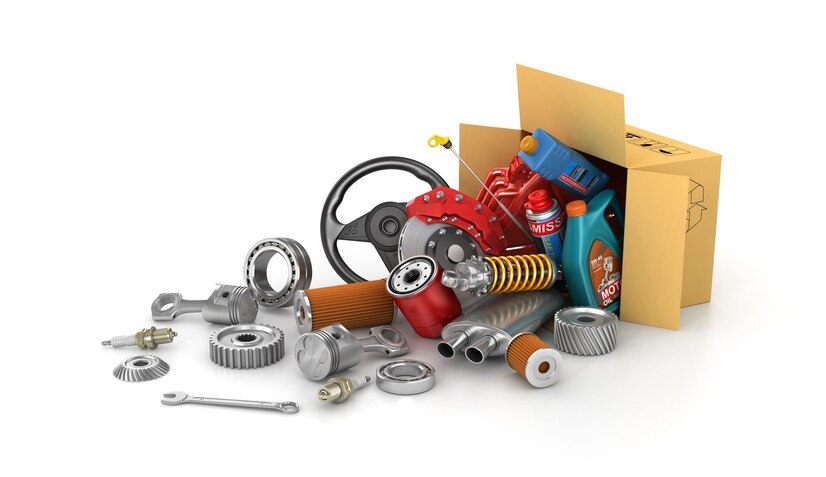Businesses today have become highly competitive and customer-centric. This calls for proactive measures in vehicle delivery operations that are efficient and reliable. Today, most businesses seek solutions that offer real-time data and reporting. This calls for the implementation of a digital vehicle inspection system that offers insights and real-time data for businesses to drive analytics and implement targeted strategies. Such software also helps businesses streamline their supply chain and enhance customer satisfaction.
Today, we will discuss how implementing inspection software benefits and helps companies optimize their supply chain operations.
What is Real-Time Vehicle Inspection Tracking?
With advancements in technology, there are many software in the market that helps businesses track and analyze vehicle inspection data and drive insights from it in real-time. Such software collects the data through pictures and videos of the vehicle. This allows for a comprehensive check of the vehicle and can also help identify issues clearly. While doing these inspection activities, it becomes clear when the vehicle would require maintenance and repair work. This also helps record the vehicle's condition and also its location. The digital vehicle inspection software allows fleet managers to schedule maintenance activities and reduce costly downtimes that impact the business.
What Benefits Does This System Have?
To better understand any system and how it impacts any business, it is essential to understand if it helps cut down costs or overhead expenses. This way, the entire process or function can be streamlined with the help of such inspection software. Let us see what benefits this software brings to businesses:
Enhanced Safety: Safety is a major concern for fleet managers when performing inspection activities as they would directly impact their business operations. Considering these factors, fleet managers have to ensure that all criteria are met before the vehicle goes on the road. Let us see the benefits:
Proactive Maintenance: While performing inspection activities, the major concern for fleet managers is to ensure there are no issues with the vehicle before it hits the road. Detecting potential issues early on can lead to better vehicle life, fewer issues, and longer vehicle lifespan. This can also enable fleet managers to schedule maintenance activities to avoid breakdowns which prove to be very expensive for businesses.
Driver Safety: When integrated with real-time diagnostic tools, it can also enable companies to track drivers in real-time and monitor their on-road behavior. This may include speeding or braking harshly. All these monitoring activities can contribute to the overall safety of both the driver and the vehicle.
Emergency Response: If a vehicle breaks down or faces any issues while on the road, there are tools that can help with pinpointing the exact location of the vehicle. This would lead to drivers having the accessibility to emergency services on the go. This feature comes in very handy, especially in an accidental situation.
Higher Efficiency: When performing inspections at regular intervals and scheduling the maintenance and downtime activities, the vehicle’s life is increased. In such cases, both the drivers and the vehicle can perform with a higher efficiency. Furthermore, continuous usage can lead to optimization in various aspects of the vehicle lifecycle. Let us see the benefits:
Optimized Routes: With the option to track the live location of vehicles, fleet managers and companies can optimize the routes of vehicles to improve fuel consumption and also reduce travel time. This way both the driver and the vehicle can work with full potential without over-exertion.
Better Asset Utilization: When performing these activities, fleet managers must understand the main objective which is to ensure that their fleet is efficiently operated. This would mean that both the driver and the vehicle are utilized effectively. This can be possible with various integrations with the inspection software such as diagnostic tools and fleet management tools. This helps manage the idle times of the vehicle and ensure maximum utilization of the asset at hand.
Streamlined Operations: In addition to the objective of efficient utilization of the fleet, businesses also have another end goal to streamline operations. This streamlining helps with a reduction in the overhead costs and also ensures that profitability is improved. Through streamlined operations, businesses can reduce overhead costs and the additional burden on the administration to enhance the asset utilization and profitability of the fleet.
Data-Backed Decision Making: When performing any inspection activities, the vehicle inspection software captures significant data. Also, when the fleet is equipped with sensors and trackers, it adds to the data collected and every piece of this data provides an insight into the operations of the fleet. Such data-backed decision-making can help improve future strategies. Let us look at the benefits
Analysis of Performance: When tracking vehicles and collecting real-time data, fleet managers and companies can get real-time insights from the vehicle. This sheds more light on the performance of the vehicle and helps identify trends with such collected data.
Predictive Maintenance: With enough data collected, referring to historical data provides insights on when the vehicle would need maintenance and downtime activities. This helps with better management of the fleet and ensures there are no unscheduled downtimes.
Optimization of Costs: With such analytics and data, fleet managers and companies can ensure better cost utilization and reduce administrative burdens to improve the overall profitability of the operations. This also optimizes the cost of fleet operations and enables companies to implement strategies for future growth of fleet operations.
Conclusion
Real-time vehicle inspection, tracking, and reporting can have multiple benefits for businesses. This is especially beneficial for businesses that are primarily dependent on fleet operations such as logistics and transport companies. The inspection software collects diverse data pertaining to vehicle performance and utilization. Through this measure, businesses can improve their operations and also implement future-forward strategies to improve the performance of the fleet and the vehicle.
The driver tracking ensures that emergency services are also provided on the go and that there is enough attention given to the utilization of vehicles and drivers. Real-time monitoring of the vehicle's health and driver's behavior can also be done by integrating various other software such as diagnostic tools to ensure the comprehensive and all-around tracking of the vehicle and the driver.








